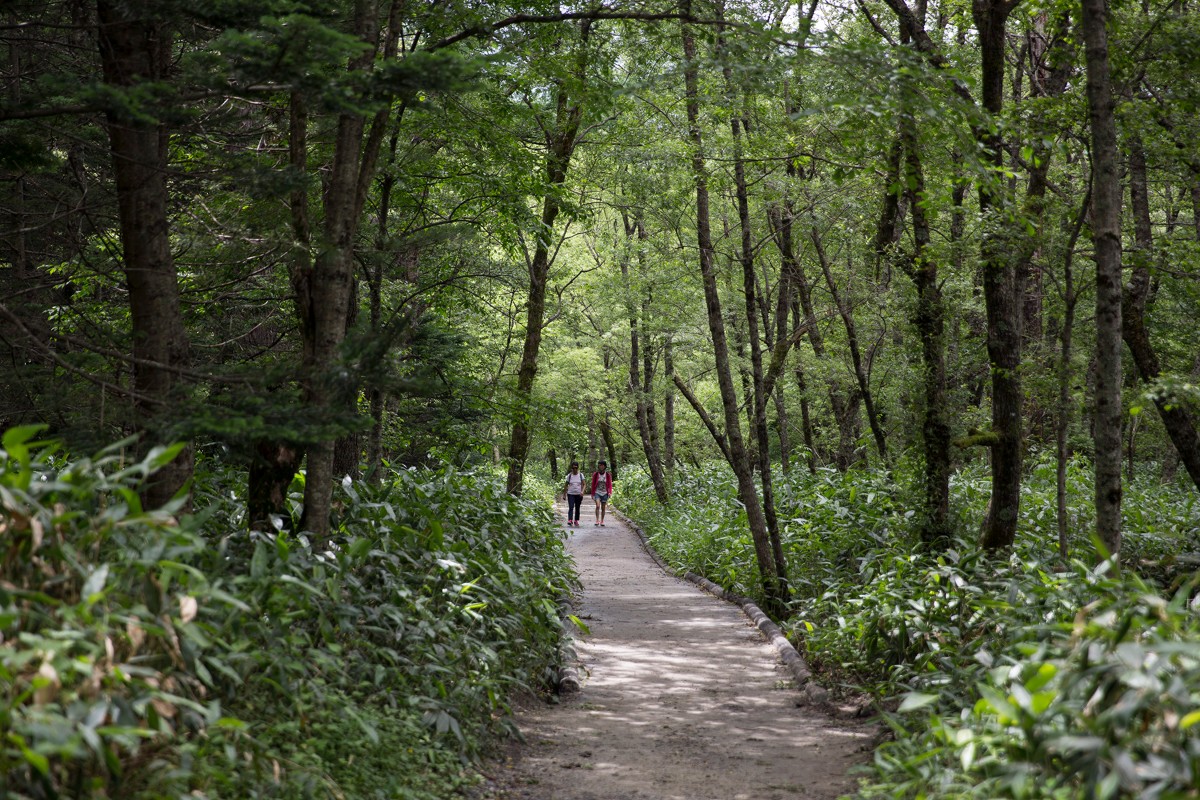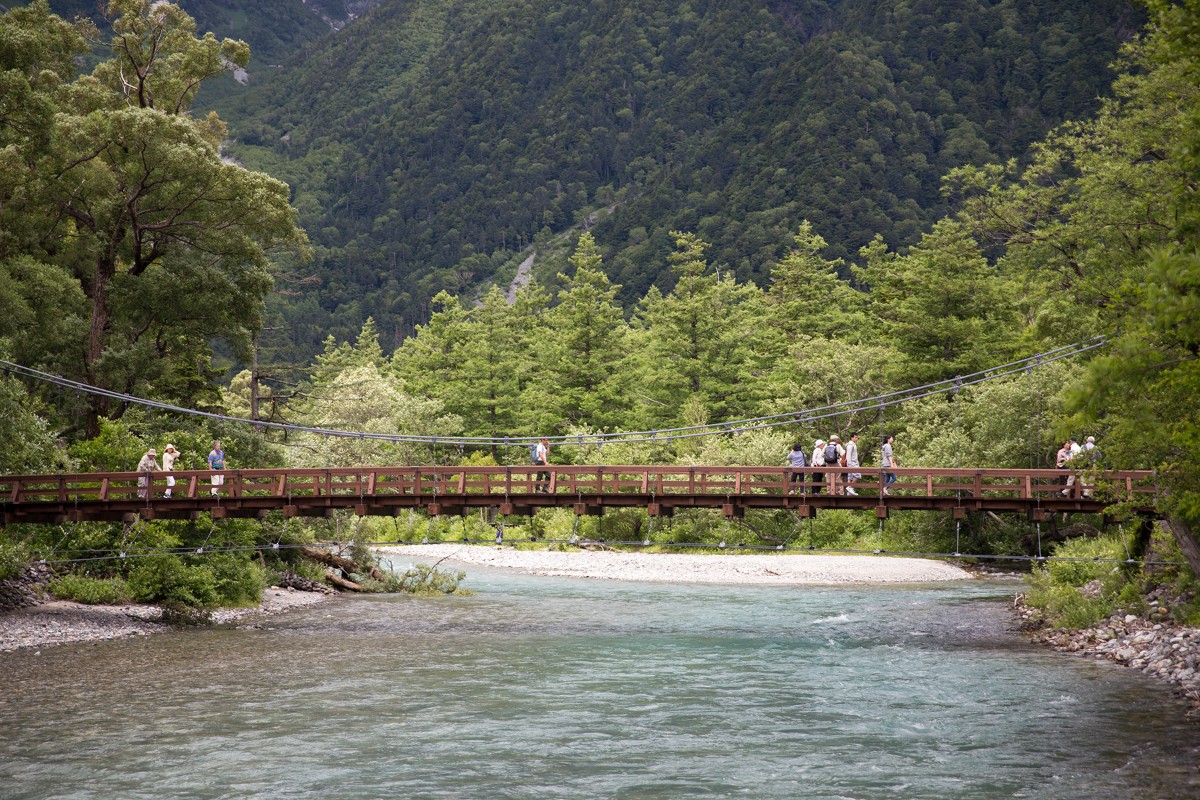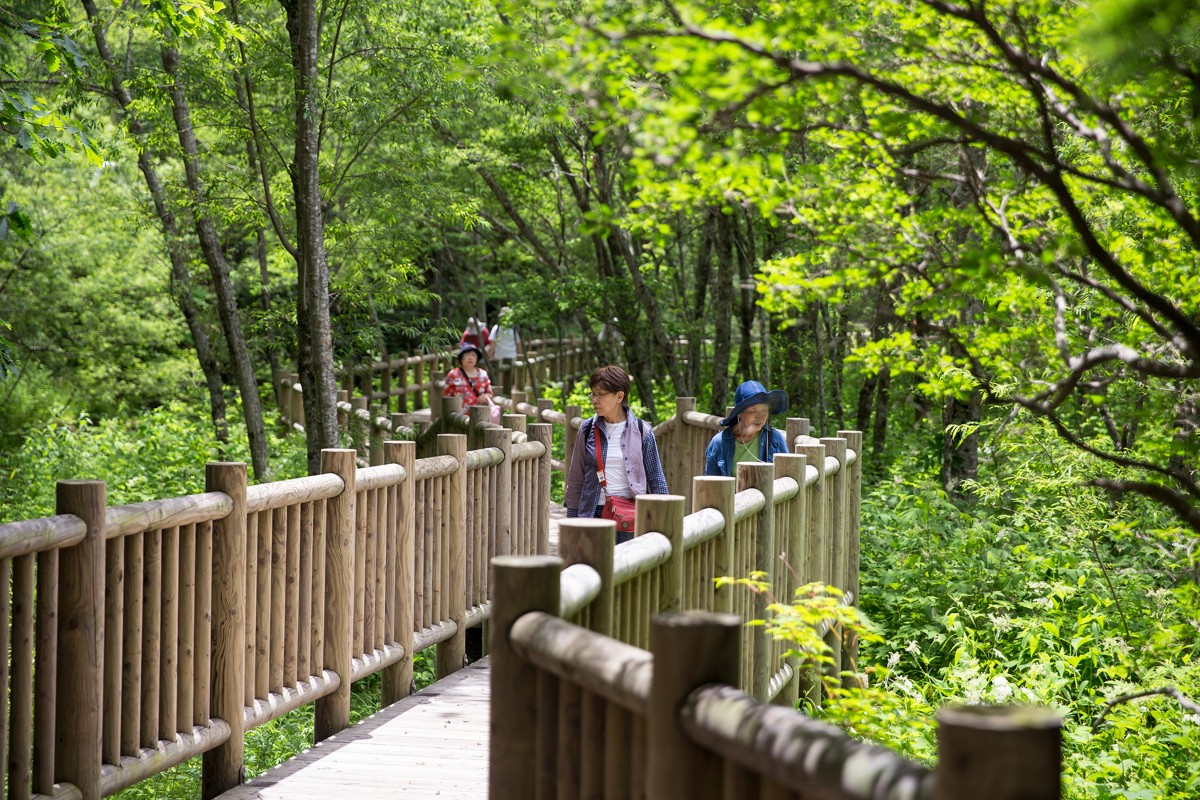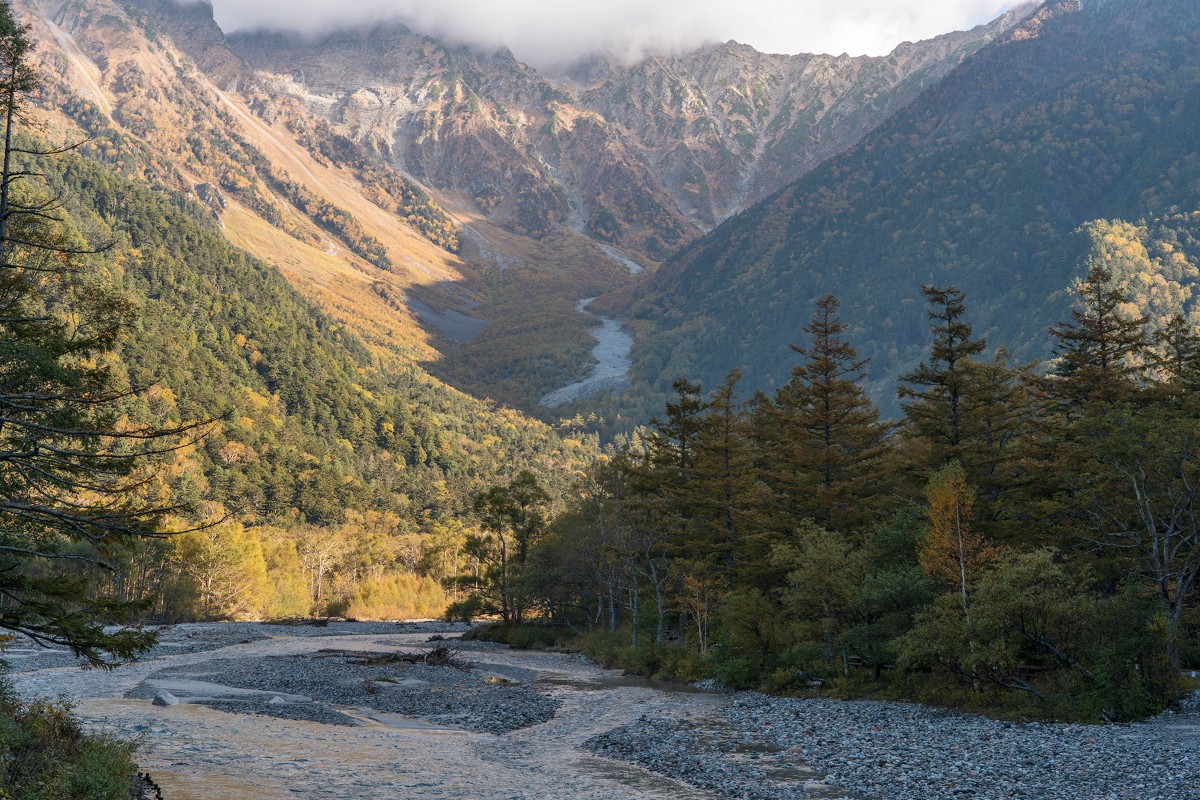Nestled deep in the Alps, Kamikochi seems worlds away from the urban sprawl most people associate with Japan. The air is fresh, the waters crystal clear, and the mountains majestic. The name can mean “high above earth” or “where the gods descended” and is apt both literally and figuratively.
Located a little less than two hours from either Matsumoto or Takayama (both worthy of a visit), makes it a comfortable escape and return to the wild. Due to the increasing popularity of the national park, private vehicles are no longer allowed inside the resort, meaning the only means of vehicular access is limited to either bus or sanctioned taxis. This is more of a blessing than an inconvenience for those basking in the peacefulness of what many refer to as their favorite place in Japan.

At the bus terminal, there is a tourist information center where visitors can purchase pocket-sized maps of the area for 100 yen. There is also a rest area where you can plan your route while enjoying refreshments from one of the many nearby shops. Those who need a toilet are encouraged to show their appreciation for cleanliness by placing a tip in a box with a note stating the average amount is 100 yen. There are about seven other equally clean toilets scattered throughout the park that deny you this privilege, forcing the use of their facilities for free.

Walking towards the azure waters of the Azusa River, it’s easy to see Kappabashi (not to be confused with the popular “Kitchen Town” in Tokyo), the most famous bridge in the area, and a popular landmark where many visitors like to take pictures. The view from there of the nearby mountains towering above is, in a word, stunning. Both sides of the bridge offer a number of accommodation and refreshment options.
A relaxed half-hour walk downstream brings you to the Hotaka and Tashiro bridges, which are joined by a small island. Another twenty minutes or so from there, either by a river or forest path, brings you to Taisho Pond, which was formed when nearby Mount Yake, an active volcano, erupted in 1915. The ever-present smoke plume coming out the top can serve as a reminder to be respectful of nature, especially in its most pristine state. Speaking of which, visitors are expected to leave only footprints, bringing all trash home with them (most opt for a rubbish bin in the nearest major town, but some, like my roommate, actually do maintain an impressive alter to the god of refuse in their house).
Those who would rather not retrace their steps, and don’t mind paying four or five hundred yen, can catch a bus at the nearby Taisho Bus Stop bound for the terminal, where they can start again.

Myojinbashi is the next bridge upstream from Kappabashi, and can be reached in about an hour by either a boardwalk across marshes and streams on the north side of the river, or via a footpath through a campsite with toilets on the south side. Keep your eyes open for macaques. Nearby Myojin Pond (entry ¥300) is a must-see. There are rest areas either side of the bridge with toilets and refreshments available.
Another hour or so upstream, on the south side, is a grassy meadow dotted with elm trees. This used to be a pasture, but is now Tokusawa campsite. There are more lodging, toilet and refreshment opportunities here as well. For day-trippers, this would be a good place to turn around and head back to the bus terminal. Serious hikers staying in the area will want to continue on a few hours to the peaks.

There is plenty of gorgeous scenery to be enjoyed by all fitness levels, making Kamikochi a fantastic destination for all age groups. The usual outdoor common sense (stay on paths, don’t feed wildlings) applies. Dressing in layers with waterproof gear is recommended as the weather can change from a warm sunny day to hail in a couple hours.
More information can be found here: www.kamikochi.or.jp/english

